June 15 and 16, 2000.
Five more hours, and some interesting experimentation. My father-in-law, who by the way has his EE, told me that by shunting off the field current I would cut the back-EMF increasing the effective voltage, thus raising current, drawing more power, and delivering more power.
Quoting here from an email to my father-in-law...
I hung a great big old resistive controller on the frame over the drive motor and connected its two leads to the two terminals of the field windings. I donned my helmet, took to the road.
Having reached top speed, I reached over to the slider and took it from the open-state position, and slid it along the brass contacts, waiting for some subtle seat-of-the-pants difference. I didn't feel anything until the slider went all the way to the fully closed state. (At that moment, then, I had shorted together the field terminals. Given the very low resistance of the field coils paired with the very low resistance of my "short," I probably shunted off something like half the current.) I heard the difference as I felt it, a little whine and a little extra kick. The current reading hopped up about 20%. (Sensible both as a simple circuit consequence, but also in terms of power: no free lunches... more speed means more current had to be drawn at the terminal voltage of the batteries.)
For the first time, the speed of the trike comfortably exceeded 40 mph. Cool. Electric overdrive.
Two other items of note:
- I tried putting up both of the motors again, going from a 23-tooth sprocket on one-wheel drive to16-tooth sprockets on each of the motors in 2WD. (That's not quite the 2:1 reduction we talked about... I need to order 12-tooth sprockets, if they make them. I may have to diddle the 2nd stage on each side.) The top speed I got was 30, compared to high 30s for the 1WD setup, though the current was lower, correspondingly lower, than the high 30's on 1WD.
- The current into the controller is not the same as the current out, though power is (almost exactly, as you might expect). Starting the vehicle up, on the input (battery) side, the voltage stays at terminal voltage of the traction pack and the current rises from next-to-nothing up to, well, high numbers (I've hit 275 A there). Meanwhile, on the output (motor) side, the current will hit the 275A limit and hold there as the voltage climbs from next-to-nothing up to terminal voltage of the traction pack, then fall back (unless I am pulling a hill).
The resistive controller is an experimenter's friend. I have used the resistive controller from one of the donor golf carts for many experiments; indeed, it was THE controller when I got the Maxion inspected its first time. Here it is in place as a variable resistor for the field winding bypass.
Total cost so far: $2375. Total time so far: 375 hours.
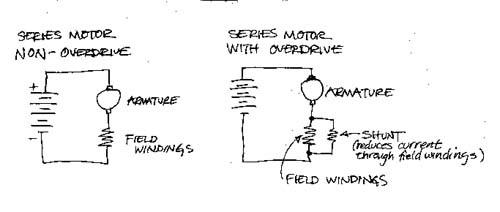


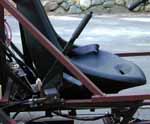

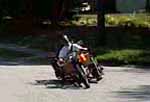
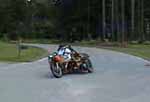
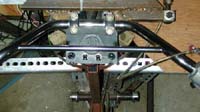
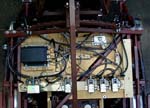

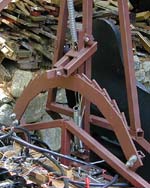

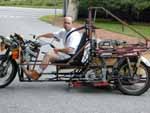
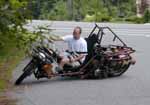


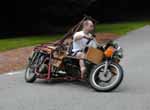
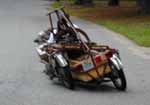
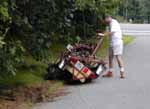 And yet,
the perpetual problem... Dynamic stability requires friction. At the edge of the trees, I lost that friction
in the pine duff, and skidded to a stop. My heel and calf got banged up. It's sobering and scary, even at slow
speeds on a side street, to come a-cropper. It's time to tighten up for the fall.
And yet,
the perpetual problem... Dynamic stability requires friction. At the edge of the trees, I lost that friction
in the pine duff, and skidded to a stop. My heel and calf got banged up. It's sobering and scary, even at slow
speeds on a side street, to come a-cropper. It's time to tighten up for the fall.